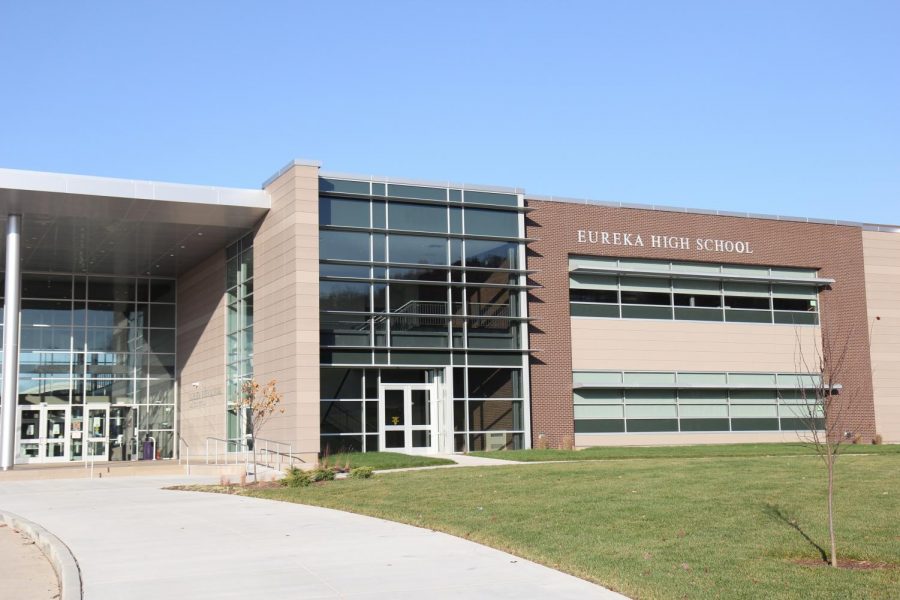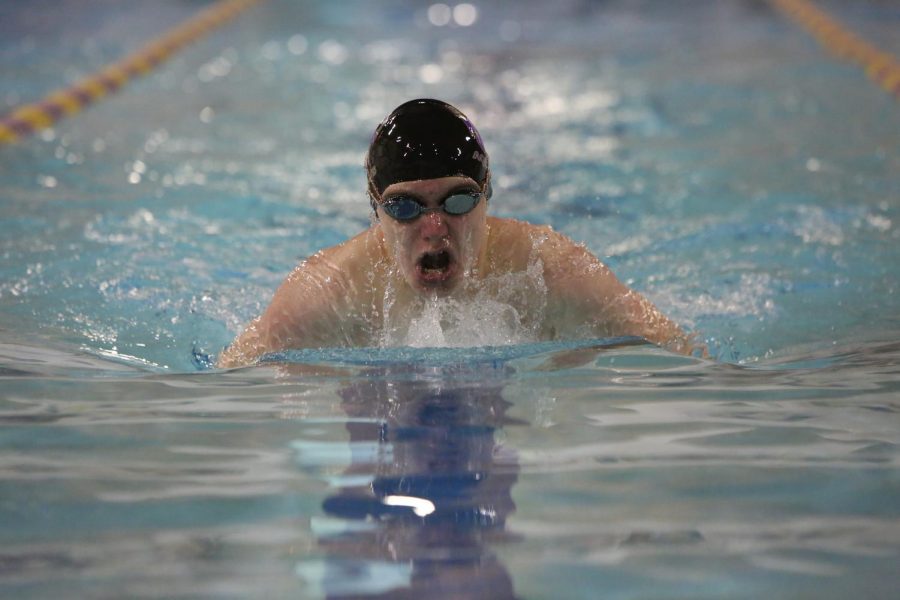Only a screen away
Students interact with their teachers at home in flipped classrooms
Dani Ridinger (11) watches a video posted for Mrs. Cynthia Sieloff’s Honors Algebra 2 class, Oct. 24.
November 6, 2014
What started as a district workshop has become an EHS initiative. Twenty teachers have currently flipped their classrooms, where students watch classroom instruction at home and work on schoolwork inside the classroom.
Eleven classes throughout four departments are utilizing flipped classrooms.
Science:
- Biology: Mrs. Carolyn Baremore, Mrs. Mandy Kotraba and Mrs. Elise Perrin
- Honors Biology: Ms. Kelly Cullen and Ms. Lindsey Mueller
- Chemistry: Dr. Bill McIlwee
- Geoscience: Ms. Julia Varriano
Mathematics:
- Algebra 1: Mr. Carlo Atienza, Mrs. Lyndsey Critchell, Mr. Michael Hanna, Mrs. JoAnn Pinnell, Mrs. Patrice Willard and Mrs. Mary Wisdom
- Honors Alegebra 2: Mrs. Cynthia Sieloff
- Pre-Calculus: Mr. Atienza, Mrs. Morgan Burks, Mr. Matt Hoevelmann
- Trigonometry: Mrs. Cheryl Abbott, Mrs. Critchell, Mrs. Karen Happel
History:
- AP World History: Mrs. Sandy Merrell and Mrs. Lauren Schoellhorn
- World History: Mrs. Schoellhorn
Art:
- AP Art History: Mrs. Schoellhorn
“We as math teachers are always looking for something innovative to meet the needs of kids,” Mrs. Mary Wisdom, Math Department chair, said. “With kids being so busy, we were just looking at concepts that will better meet the needs of kids today because it allows us to get further and cover more activities.”
Student involvement is key to maximizing success in a flipped classroom; if students don’t watch the assignment at home, then they are not prepared for the next day’s class.
“The flipped classroom is essentially instead of lecturing in class, I record the lecture,” Mrs. Sandra Merrell, Social Studies teacher, said. “Students write notes at home and bring it to class the next day, and it leads us into an activity where students would be working together.”
The purpose of a flipped classroom is to maximize student-teacher time together by providing direct instruction at home and work time during class.
“Instead of sitting there for 20 minutes taking notes, which is kind of mind-numbing at times, they are doing that part at home,” Mr. Bradley Klages, junior class principal, said.
Teachers are trying this approach to maximize work time in the classroom and increase student engagement.
“I like this way of teaching better,” Grace Floyd (9) said. “We get to work on our homework in class instead of outside of school.”
Technology has changed the way students learn; with all the new developments, the amount of ways to efficiently learn have increased.
“Without technology students wouldn’t be able to use this strategy,” Mrs. Deborah Asher, head principal, said. “There are so many online resources students can use outside the classroom to help them learn.”
Teachers use multiple websites to aid students needs in learning. Khan Academy, a frequently-used resource, is common among students, according to Mrs. Asher.
“Mrs. Sieloff uses a website called CrazyForEducation,” Dani Ridinger (11) said. “She posts a video, so she doesn’t have to spend as much time on that lesson in class but instead focus on what students need a better understanding of.”
Initial results are positive.
“I have found this way of teaching to be extremely successful,” Mrs. Schoellhorn, Social Studies teacher, said. “I have definitely seen an improvement in the scores I have had for quizzes and tests so far.”
Although, like anything new, there is bound to be quirks.
“I haven’t used the technology very much,” Mrs. Merrell, said. “Due to the technology not uploading the videos, it didn’t work out so well.”
And like anything new initials efforts may need tweaking.
“It helps if you don’t understand a concept, but it’s not necessarily my favorite thing,” Luke Detering (10), said. “If you do a lesson in class, and the is on a different topic, it confuses me.”
The idea is that this approach will help students get more out of learning, especially students with busy lifestyles.
“It’s a good way for kids to get a lot of studying done at home,” Ms. Varriano said. “They can re-watch the lectures without having to rely on their notes.”
Whether or not this way of teaching is effective will be proven in students summative and formative work as teacher assess student learning.
















